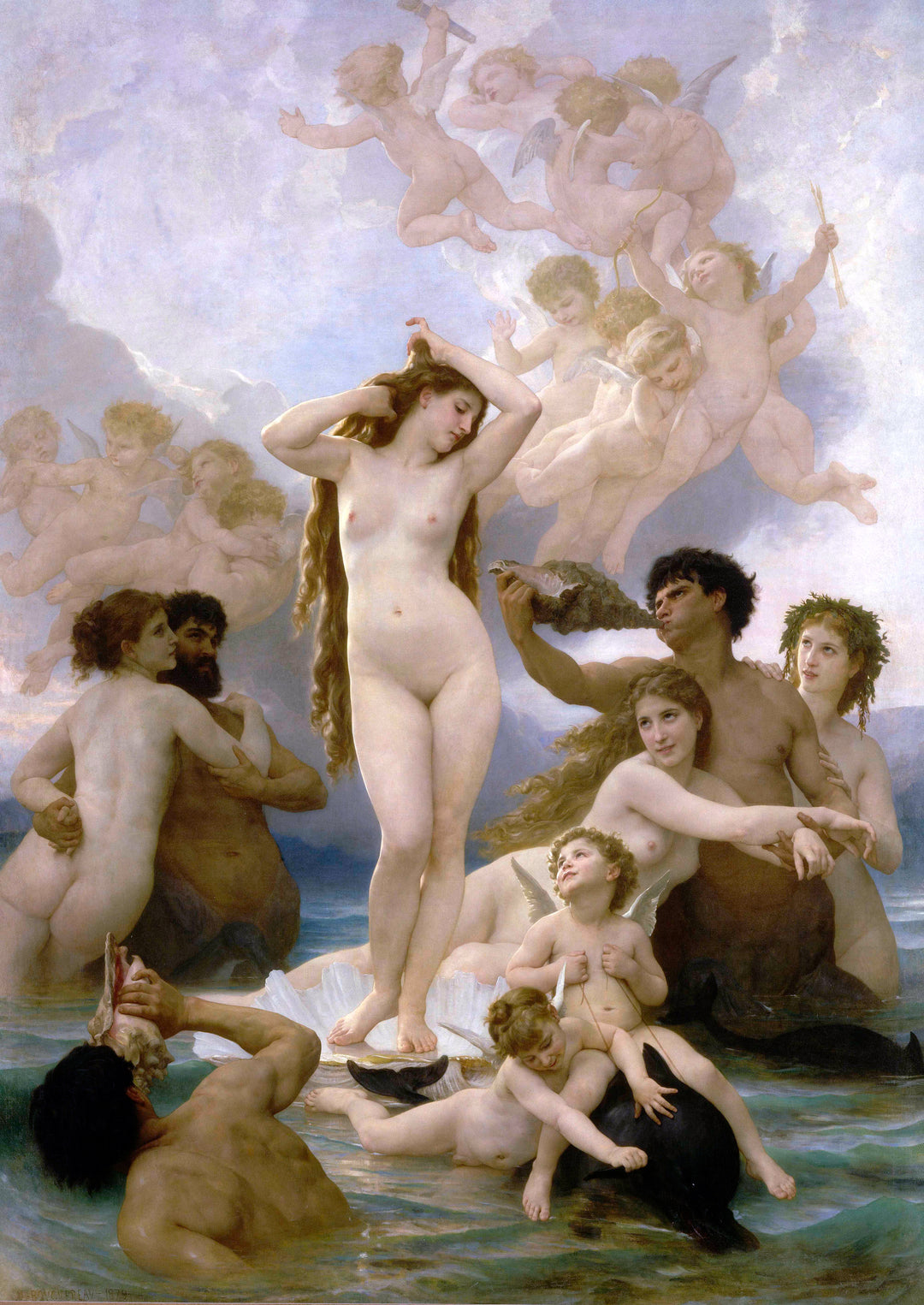
The Birth of Venus - Bouguereau
| Author: | Bouguereau |
|---|---|
| Title: | The Birth of Venus |
| Original location: | Musée d'Orsay, Paris, France |
| Year: | 1879 |
The painting "The Birth of Venus," a monumental work by William-Adolphe Bouguereau, depicts a mythological scene with academic perfection, charged with restrained sensuality, where the goddess Venus emerges on a shell surrounded by tritons, cherubs, and nymphs, all integrated into a symmetrical composition reminiscent of the theatricality of late Baroque stagecraft. Executed in oil on canvas with dimensions of 300 × 218 cm, the work stands out for its meticulous treatment of skin, achieved through subtle layers of glazes that create an atmosphere of luminous smoothness, and an almost sculptural anatomical modeling that reveals a deep knowledge of human physiology.
This painting belongs to the tradition of nineteenth-century French Academicism, heir to the Neoclassicism of Ingres, but softened by a warmer palette and a less severe emotionality, incorporating certain idealistic nuances of Romanticism without abandoning technical rigor. At a time when "positivist science" (an epistemological approach to science holding that authentic knowledge can only be derived from empirical observation and verification by the scientific method) dominated European thought, Bouguereau offered an almost biological vision of beauty, where the corporeality of Venus was not only a symbol of the divine, but also the result of an empirical study of the body, in line with the rise of artistic anatomy.
Politically, the work reflected a conservative spirit in the face of the revolutionary movements of the late nineteenth century, serving as an aesthetic refuge for elites seeking stability in the Greco-Roman visual tradition. The harmony of lines and the frontal composition, together with the use of shallow perspectives, achieve a sense of timelessness that evokes both classical frescoes and the idealized serenity of the Italian Renaissance, especially Botticelli, although Bouguereau transforms the ethereal Venus into a fleshy, approachable, and tangible goddess. His influence extends to artists such as John William Godward and the late Pre-Raphaelites, who revisited the female figure with an emphasis on decorative perfection and sensual allegory.
This academic masterpiece titled "The Birth of Venus" synthesizes an imaginary world where mythology, science, pictorial technique, and political reaction intertwine to offer an image of beauty that, though rooted in the past, responded to modern tensions with Apollonian elegance.